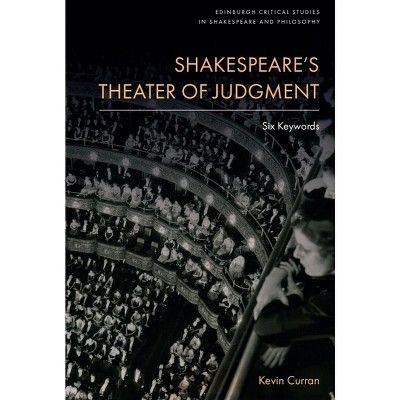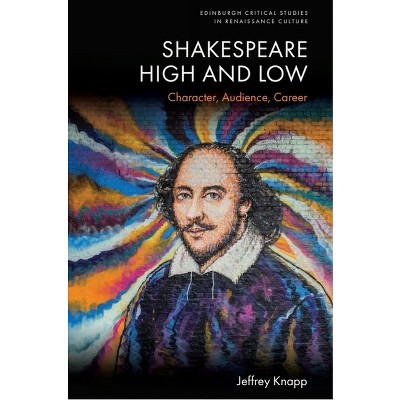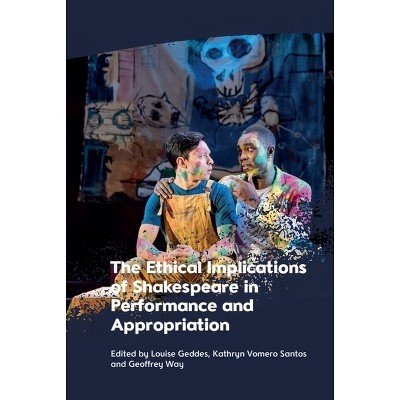About this item
Highlights
- Drawing inspiration from Robert Greene's deathbed attack on Shakespeare as "an upstart crow, beautified with our feathers," The Bodger (Elizabethan variant of "botcher," "mender," "patcher") argues that Shakespeare's dramas are compositions of "shreds and patches" pieced together by a mind of extraordinary synthetic acuity.
- About the Author: Joel Altman is Emeritus Professor of English, University of California, Berkeley.
- 240 Pages
- Literary Criticism, Shakespeare
Description
About the Book
Investigates Shakespeare's mode of composition and the way contemporary psychology informs dramatic representation through ekphrasisBook Synopsis
Drawing inspiration from Robert Greene's deathbed attack on Shakespeare as "an upstart crow, beautified with our feathers," The Bodger (Elizabethan variant of "botcher," "mender," "patcher") argues that Shakespeare's dramas are compositions of "shreds and patches" pieced together by a mind of extraordinary synthetic acuity. Such patches include passages of dialogue that, as described in the sixteenth century, "lead objects before our eyes" by means of ekphrasis. The book offers substantial art-historical research into the only visual artist named by Shakespeare, Giulio Romano--who performs an important role in The Winter's Tale as the alleged sculptor of a statue of the dead Queen. Giulio, heir to Raphael's workshop, is known primarily as a painter and architect. My research has revealed that he was also a designer of sculpture. Applying historical and theoretical materials to close readings of several plays, I focus on the most critical issues of The Winter's Tale--King Leontes' sudden fit of jealousy; Shakespeare's introduction of a surrogate playwright in the personification of Time, who refashions the play from tragedy to comedy, assisted by a behind-the-scenes female ghost writer; and the Queen's statue amazingly "coming to life" through an interactive declaration of faith.
From the Back Cover
Investigates Shakespeare's mode of composition and the way contemporary psychology informs dramatic representation through ekphrasis Drawing inspiration from Robert Greene's deathbed attack on Shakespeare as 'an upstart crow, beautified with our feathers' Shakespeare the Bodger argues that Shakespeare's dramas are compositions of 'shreds and patches' pieced together by a mind of extraordinary synthetic acuity. Such patches include passages of dialogue that, as described in the sixteenth century, 'lead objects before our eyes' by means of ekphrasis. This book offers substantial art-historical research into the only visual artist named by Shakespeare, Giulio Romano - who performs an important role in The Winter's Tale. As well as a painter and architect, this study reveals Giulio as a designer of sculpture. Applying historical and theoretical materials to close readings, this study explores critical issues of The Winter's Tale including King Leontes' sudden fit of jealousy; Shakespeare's introduction of a surrogate playwright in the personification of Time and the Queen's statue 'coming to life' through an interactive declaration of faith. Joel B. Altman is Emeritus Professor of English, University of California, Berkeley. His publications include The Improbability of Othello: Rhetorical Anthropology and Shakespearean Selfhood (2010) and The Tudor Play of Mind: Rhetorical Inquiry and The Development of Elizabethan Drama (2018).Review Quotes
Focusing on the idea of Shakespeare as a "bodger" or tailor, Joel Altman performs a "thick description" of The Winter's Tale, revealing how Shakespeare stitches together early modern approaches to character, rhetoric, art forms, mixed dramatic genres and theatrical faith. This masterful book provides striking insights not only into one of Shakespeare's greatest plays but also into his general method of play-making.--Peter G. Platt, Barnard College, USA
About the Author
Joel Altman is Emeritus Professor of English, University of California, Berkeley. He has most published many books and articles over the span of his career, his most recent include The Tudor Play of Mind: Rhetorical Inquiry and The Development of Elizabethan Drama (Berkeley: University of California Press, 1978--re-issued 2018) and The Improbability of Othello: Rhetorical Anthropology and Shakespearean Selfhood (Chicago: University of Chicago Press, 2010).
Shipping details
Return details
Trending Fiction












